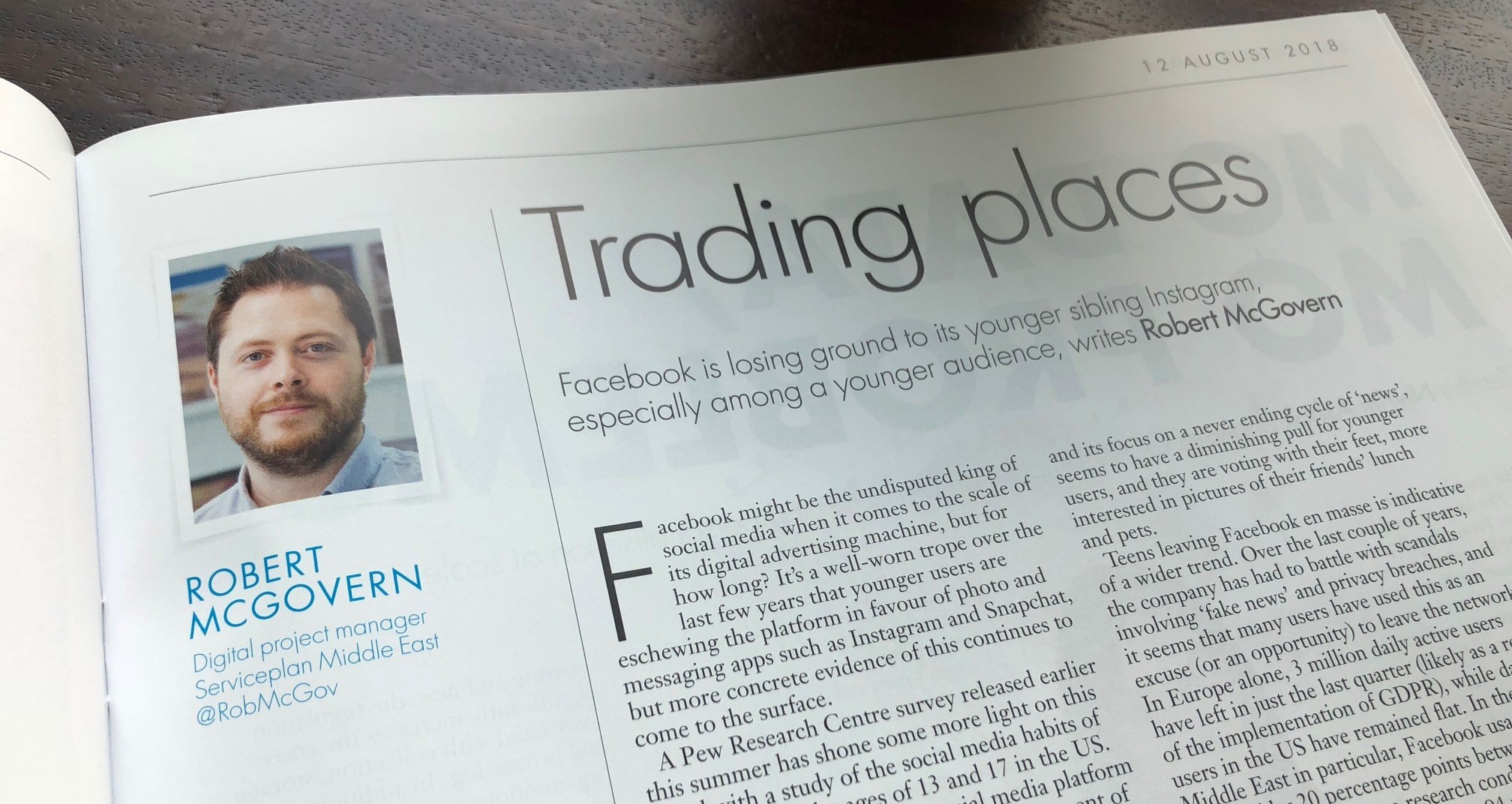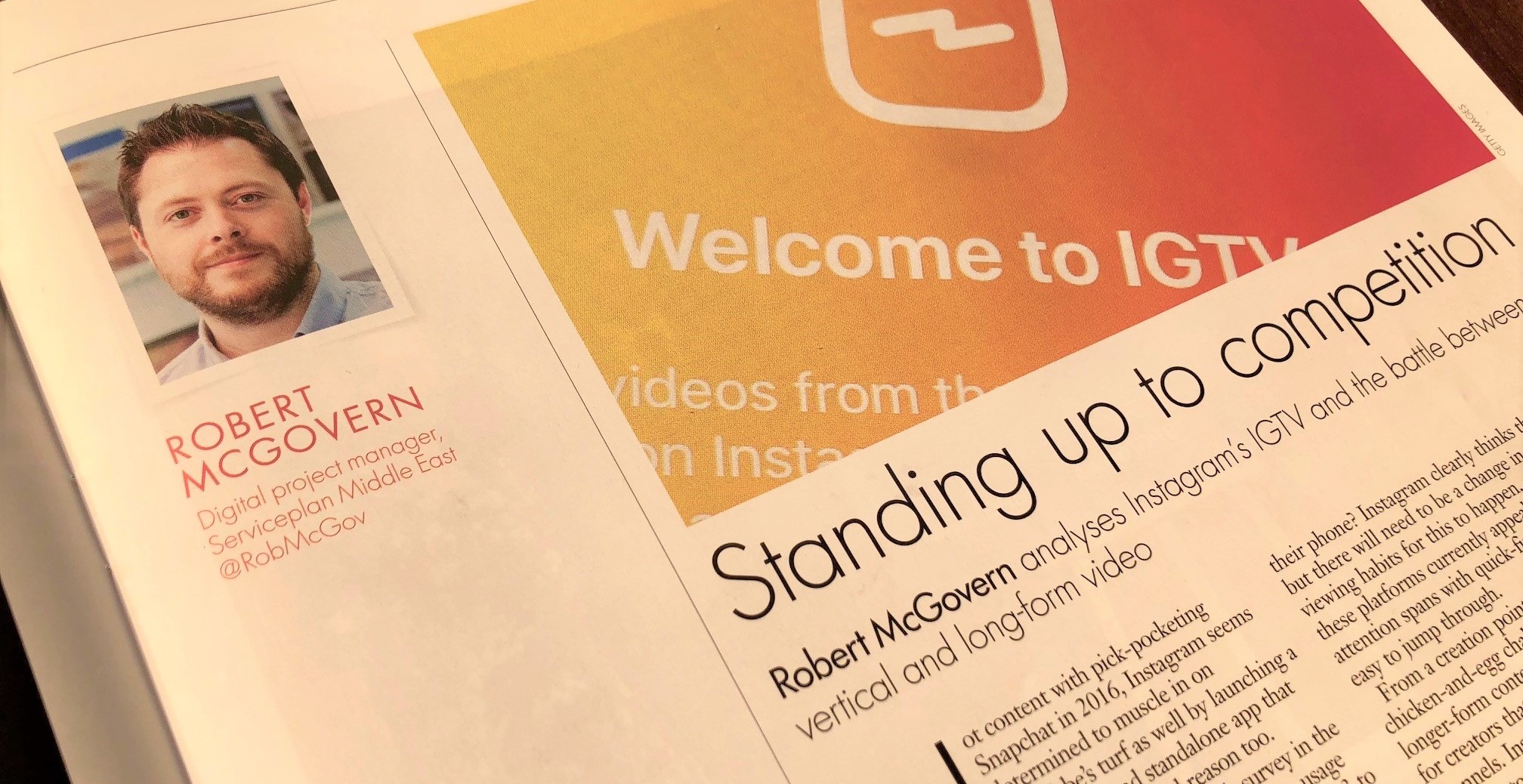Originally featured in the August 12th 2018 issue of Campaign Middle East magazine
Facebook might be the undisputed king of social media when it comes to the scale of it’s digital advertising machine, but for how long? It’s a well worn trope over the last few years that younger users are eschewing the platform in favour of photo and messaging apps like Instagram and Snapchat, but more concrete evidence of this continues to come to the surface.
A Pew Research Centre survey released earlier this Summer has shone some more light on this trend with a study on the social media habits of users between the ages of 13 and 17 in the US. In 2018, the most popular social media platform for this group is Instagram with 72% of users claiming to use it. Snapchat was close behind at 69%. Further down the field was Facebook with just over half of this group (51%) claiming to use it, and only 10% admitting to it being their most-used platform. This is in stark contrast to the results from a corresponding study in 2015. Since then, Facebook and Instagram have almost perfectly switched places; Facebook down from 71% to 51%, and Instagram up from 52% to 72%. Quite a staggering role reversal in just three years.
Mark Zuckerberg last year announced a shift in focus from ‘passive consumption’ of news and media to ‘meaningful interactions’ between friends and family. But it seems that Facebook is losing ground on both fronts: YouTube being preferred for passive consumption, Instagram and Snapchat for social interaction and self-expression. The Facebook News Feed, and it’s focus on a never ending cycle of ‘news’, seems to be a diminishing pull for younger users, and they are voting with their feet, more interested in pictures of their friends’ lunch and pets.
Teens leaving Facebook en masse is indicative of a wider trend. Over the last couple of years, the company has had to battle with scandals involving ‘fake news’ and privacy breaches, and it seems that many users have used this as an excuse (or an opportunity) to leave the network. In Europe alone, 3 million daily active users have left in just the last quarter (likely as a result of the implementation of GDPR), while daily users in the US have remained flat. In the Middle East in particular, Facebook usage declined by 20 percentage points between 2013 and 2017 according to research conducted by the Northwestern University in Qatar (94% in 2013 down to 74% in 2017) with the UAE, KSA and Qatar accounting for the biggest declines. In the grand scheme of things, this is just a drop in the ocean, but as new user sign-ups slow down (monthly active user growth is down from 13 per cent to 11 per cent year-on-year), users that visit the platform less, or even leave it altogether, will be more strongly felt. Meanwhile, Instagram’s user numbers continue to skyrocket, doubling from 500 million MAUs to 1 billion in the last two years.
Where eyeballs go, ad dollars eventually follow. Facebook’s stock price plummeted by over 20% in one day last month following a weak earnings announcement, the largest one-day loss in market value by any company in US stock market history. Not because of a fall in revenue (ad revenue was up 42 per cent year-on-year), but simply because this growth had slowed (down from 49 per cent). Facebook’s Chief Financial Officer, David Wehner, said that revenue growth would likely continue to decline for the rest of the year, partly because Facebook is planning to give users more options with their privacy settings, including letting them limit the kinds of ads they see.
Enter Instagram to save the day. In 2012, Facebook paid $1 billion to acquire the photo-sharing app, a price that many people balked at at the time. While Facebook doesn’t break out revenue from Instagram individually, data marketing technology company 4C estimated a 204 per cent growth in Instagram ad spend year-on-year during the last quarter, and the unit is expected to generate $8.06 billion in revenue in 2018 according to research firm eMarketer. By 2020, Instagram could contribute $20 billion to Facebook’s revenue according to some analysts, accounting for roughly a quarter of total revenue. In hindsight, it looks like that was $1 billion very well spent.






